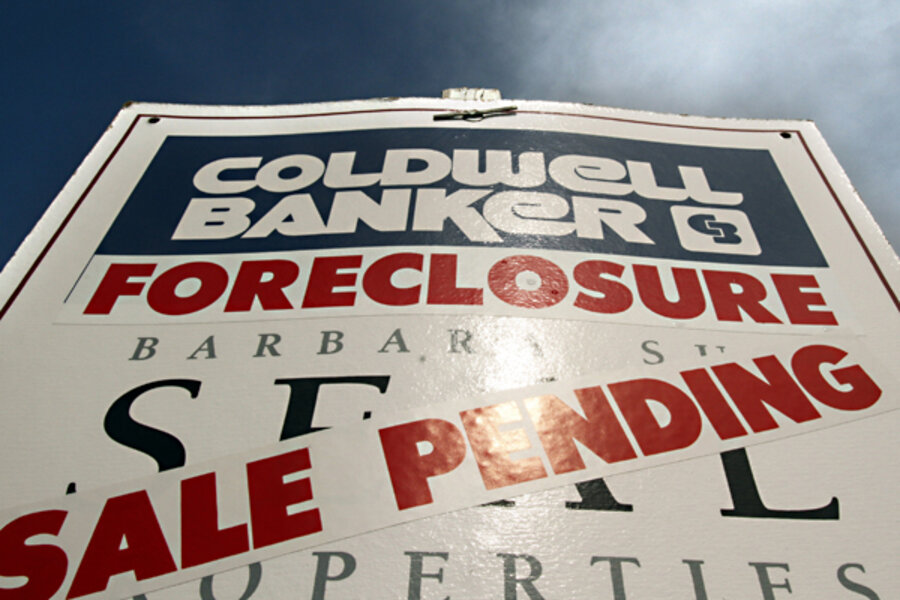Foreclosures hit nine-month high, but starts drop
Loading...
| Los Angeles
U.S. home repossessions rose to a nine-month high in November, even as the number of homes starting on the path to foreclosure declined to the lowest level in six years.
Banks completed foreclosure on 59,134 homes last month, an increase of 11 percent from October and up 5 percent from November last year, foreclosure listing firm RealtyTrac Inc. said Thursday.
Last month marked the first annual increase in bank repossessions since October 2010, when allegations of abuses by the mortgage industry compelled many lenders to temporarily halt foreclosures.
But the number of homes entering the foreclosure process or scheduled for auction for the first time, so-called foreclosure starts, sank to 77,494. That's a decline of 13 percent from October and a drop of 28 percent from November last year, the firm said.
It's also the lowest number of foreclosure starts since they hit 72,163 in December 2006.
The combination of declining foreclosure starts and a sharp increase in the number of homes taken back by lenders signals that banks are moving to complete foreclosures on homes with mortgages that have gone unpaid for a year or two, if not longer.
And it's likely that the borrowers who owned these homes already tried to refinance, get a loan modification or sell the home as a short sale — when the bank agrees to accept less than what is owned on the mortgage — but did not succeed, said Daren Blomquist, a vice president at RealtyTrac.
"Now foreclosure is the final recourse the banks have to go forward on these properties," Blomquist said.
There are close to 1 million U.S. homes that are in some stage of the foreclosure process, and any of those could potentially end up repossessed by a lender.
But several factors are now working to stem, or in some cases merely delay, foreclosures. That's a stark change from two or three years ago, when the foreclosure crisis was more severe.
Mortgage servicers and banks are increasingly favoring short sales as an alternative to foreclosure. Efforts by federal and state lawmakers to slow down the foreclosure process or make loan modifications a more likely option for homeowners also are having an impact. And borrowers are getting better about keeping up with mortgage payments.
The percentage of mortgage-holding homeowners who were at least two months behind on their payments sank in the third quarter to the lowest level in more than three years, according to credit reporting firm TransUnion.
In addition, an improving housing market, rising home prices and stronger hiring likely has helped some homeowners avoidforeclosure.
Even so, bank repossessions remain elevated and on pace to exceed 650,000 this year, according to RealtyTrac. That would be down from 800,000 last year.
"We're seeing more signs of the light at the end of the tunnel, with foreclosure starts being down," Blomquist said. "But the market still has to deal with the properties that already started foreclosure, and that could keep the (bank repossession) numbers stubbornly high the next year."
Also, lenders are still adjusting to new foreclosure ground rules set forth in a $25 billion settlement reached in February between five major banks and federal and state government officials over claims that many lenders had processed foreclosures without verifying documents.
As banks get a handle on those rules, they may move more quickly against late-paying mortgage-holders, Blomquist said.
All told, banks filed foreclosure-related notices on 180,817 properties last month, down 3 percent from October and down 19 percent from a year earlier.
Foreclosure activity, which RealtyTrac measures as the number of homes receiving a notice of default, scheduled auction or bank repossession, increased on an annual basis in 23 states and Washington D.C.
At the state level, Florida had the highest foreclosure rate of any other state, with one in every 304 households in some stage offoreclosure, or twice the national average.
Rounding out the top 10 states by foreclosure rate were Nevada, Illinois, California, South Carolina, Ohio, Arizona, Georgia, Michigan and Indiana.







